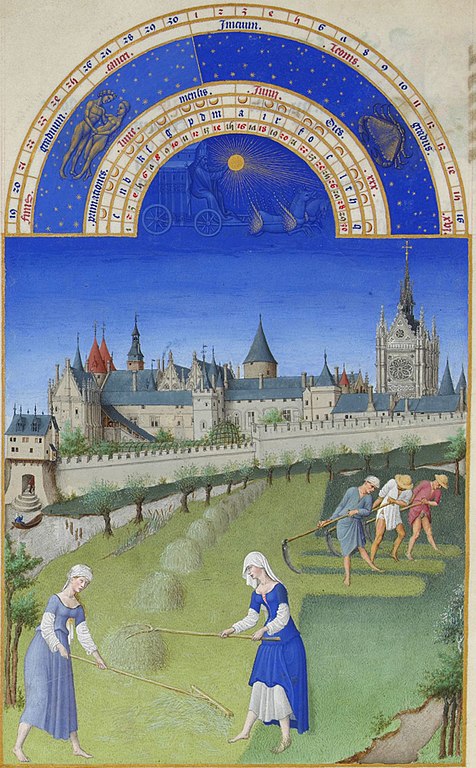
From Très Riches Heures du duc de Berry Folio 6, verso: June
Between 1412 and 1416, circa 1440 or between 1485 and 1486
Public Domain via Wikimedia Commons
Welcome to June! June is the 6th month on the Gregorian and Julian calendars and is one of four months with 30 days long. It marks the beginning of summer in the Northern Hemisphere and winter in the Southern Hemisphere. The Summer Solstice takes place between June 20-22 and is the longest day of the year. June comes from the Latin Iunius, possibly named for the goddess Juno, and on the old Roman calendar was the fourth month of the year.
Midsummer is celebrated on either the Summer Solstice or St. John’s Day (24 June) in Denmark, Finland, Norway, Sweden, Estonia, Latvia, and Lithuania. Father’s Day is observed globally but with varying dates. The U.S. observes it on the 3rd Sunday in June. Juneteenth, a U.S. federal holiday on June 19, commemorates the Emancipation Proclamation read in Galveston, Texas, freeing enslaved people.
June is popular for weddings and celebrations, a tradition that comes from Roman times when marrying in June was considered lucky. The birthstones are pearl, alexandrite, and moonstone, with rose and honeysuckle as the flowers. Though summer officially begins at the solstice, it is considered to start at the beginning of June for commercial and agricultural purposes
For More Information
- Catherine Boeckmann, “The Month of June 2025: Holidays, Fun Facts, Folklore,” Almanac.Com, last modified May 23, 2025, https://www.almanac.com/content/month-june-holidays-fun-facts-folklore.
- “The Month of June,” accessed June 1, 2025, https://www.timeanddate.com/calendar/months/june.html.
- Lesley Kennedy, “The Surprising History of June,” HISTORY, last modified May 29, 2025, accessed June 1, 2025, https://www.history.com/articles/history-june-month.




